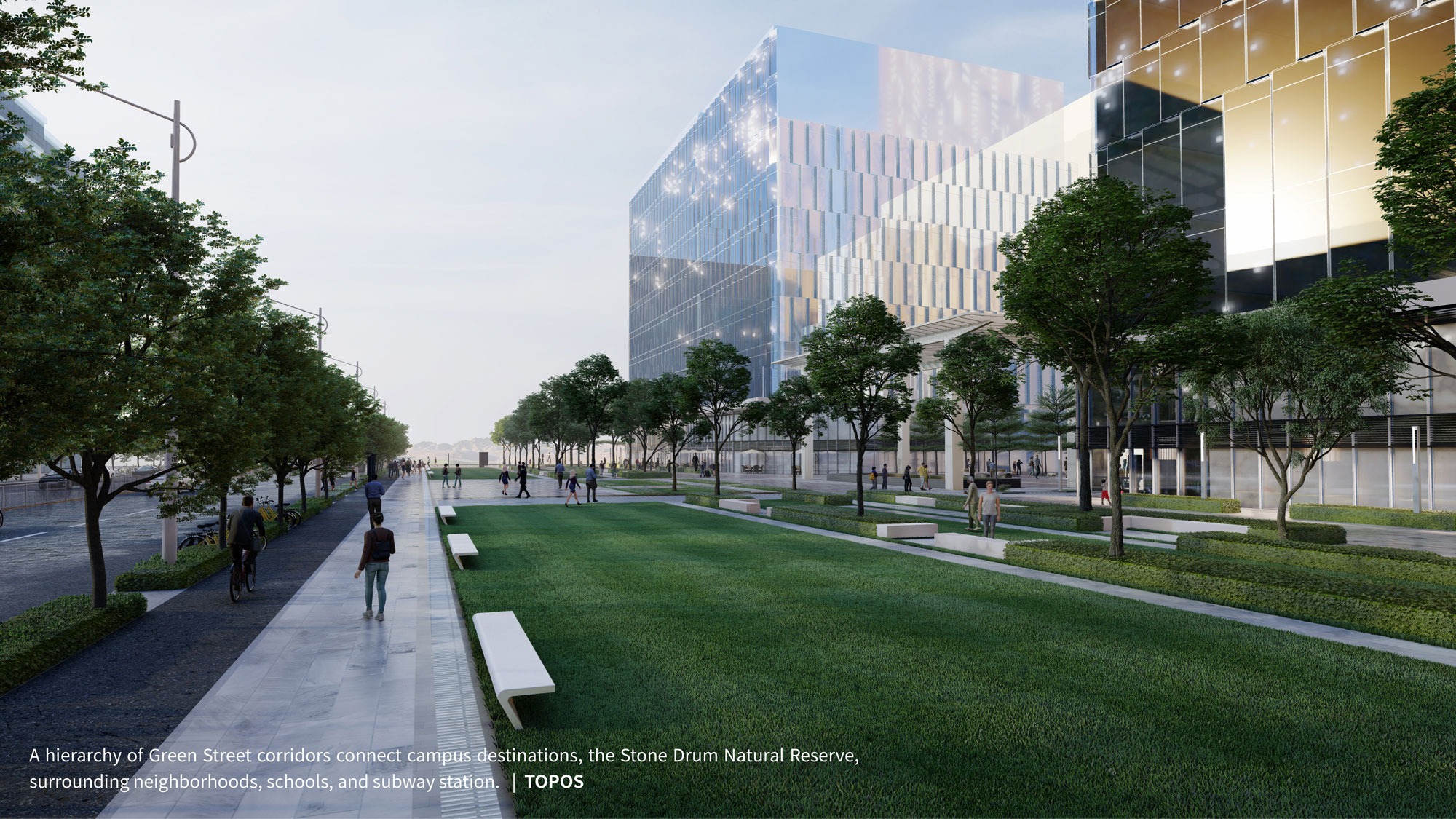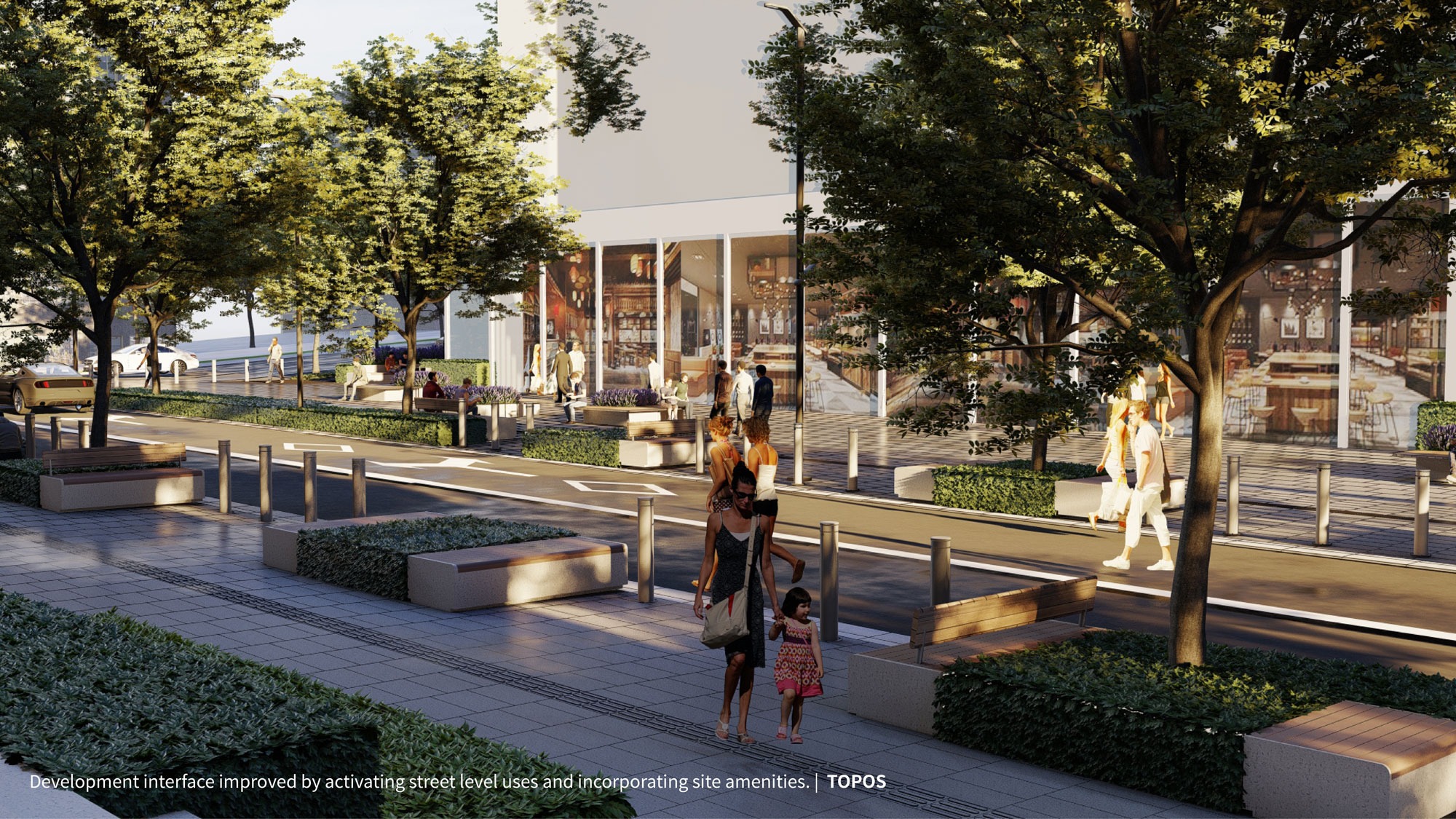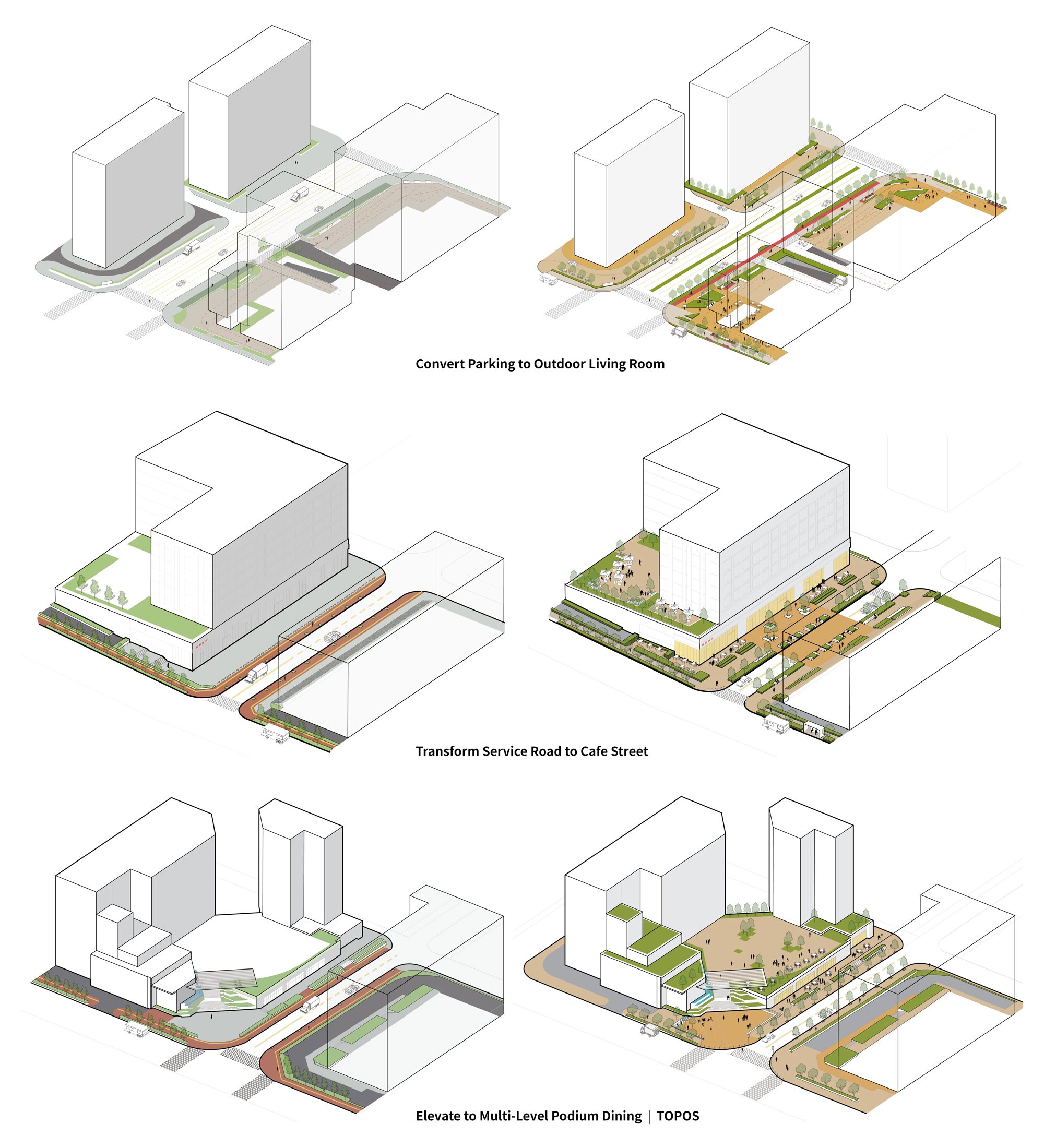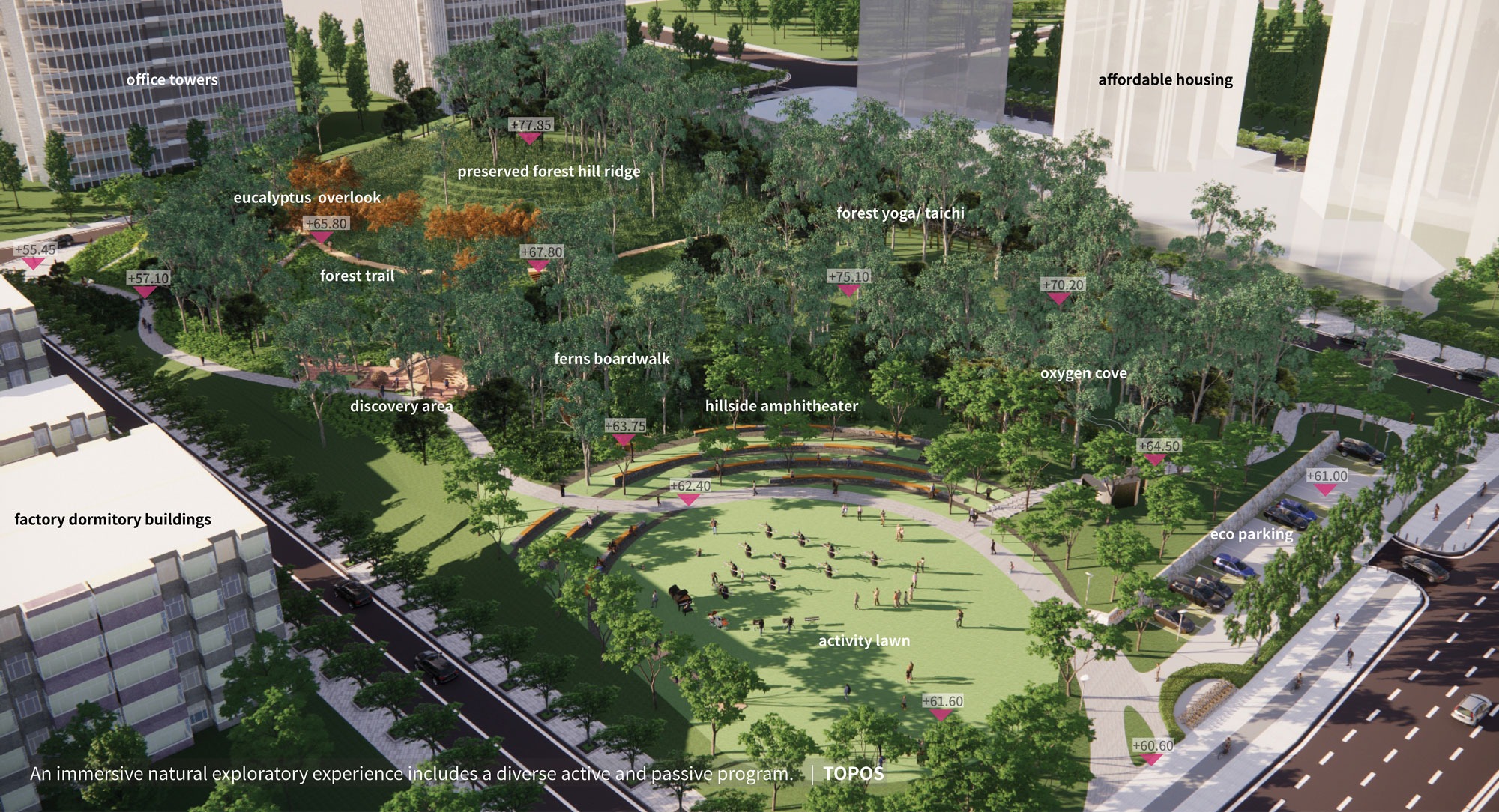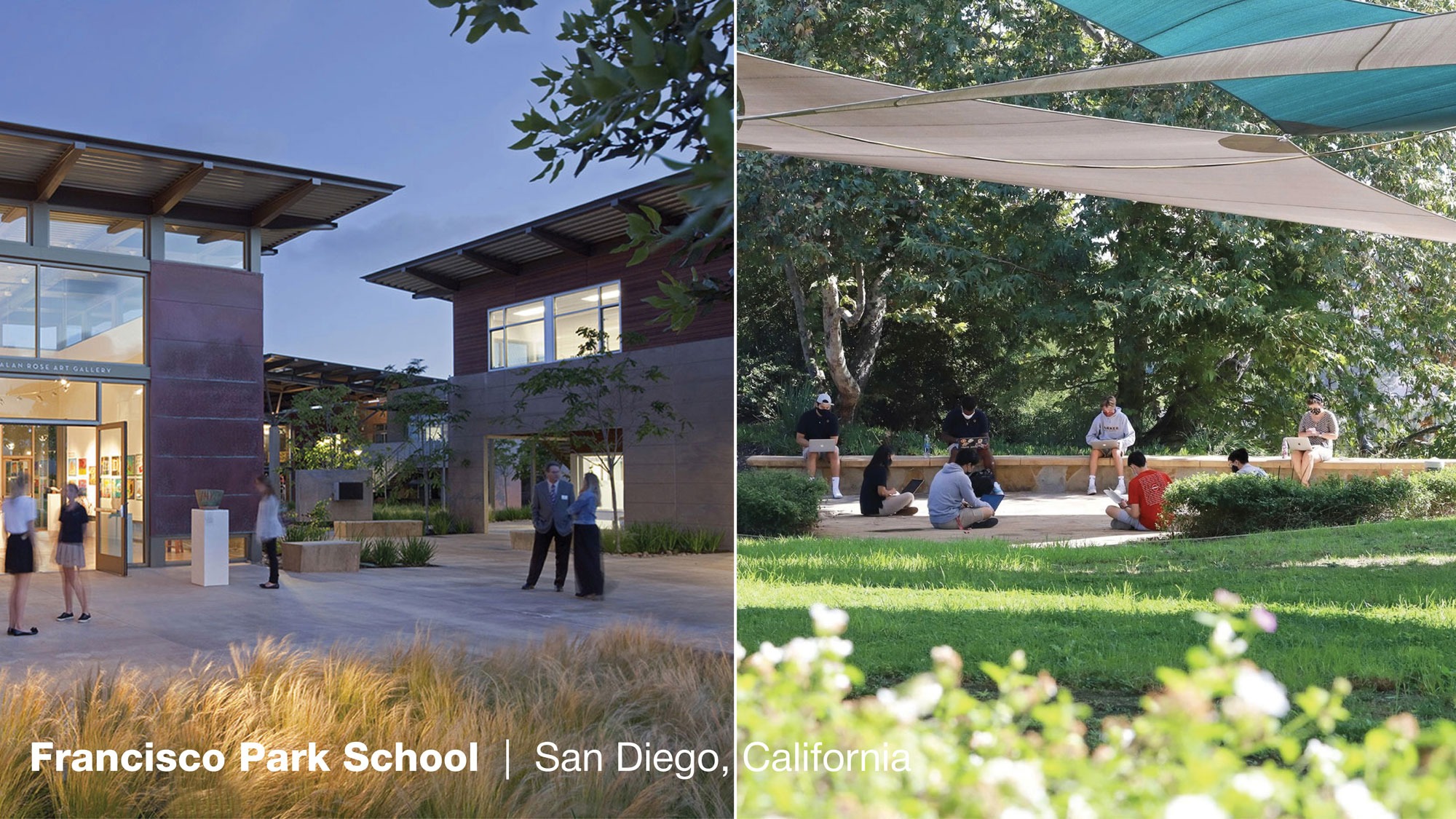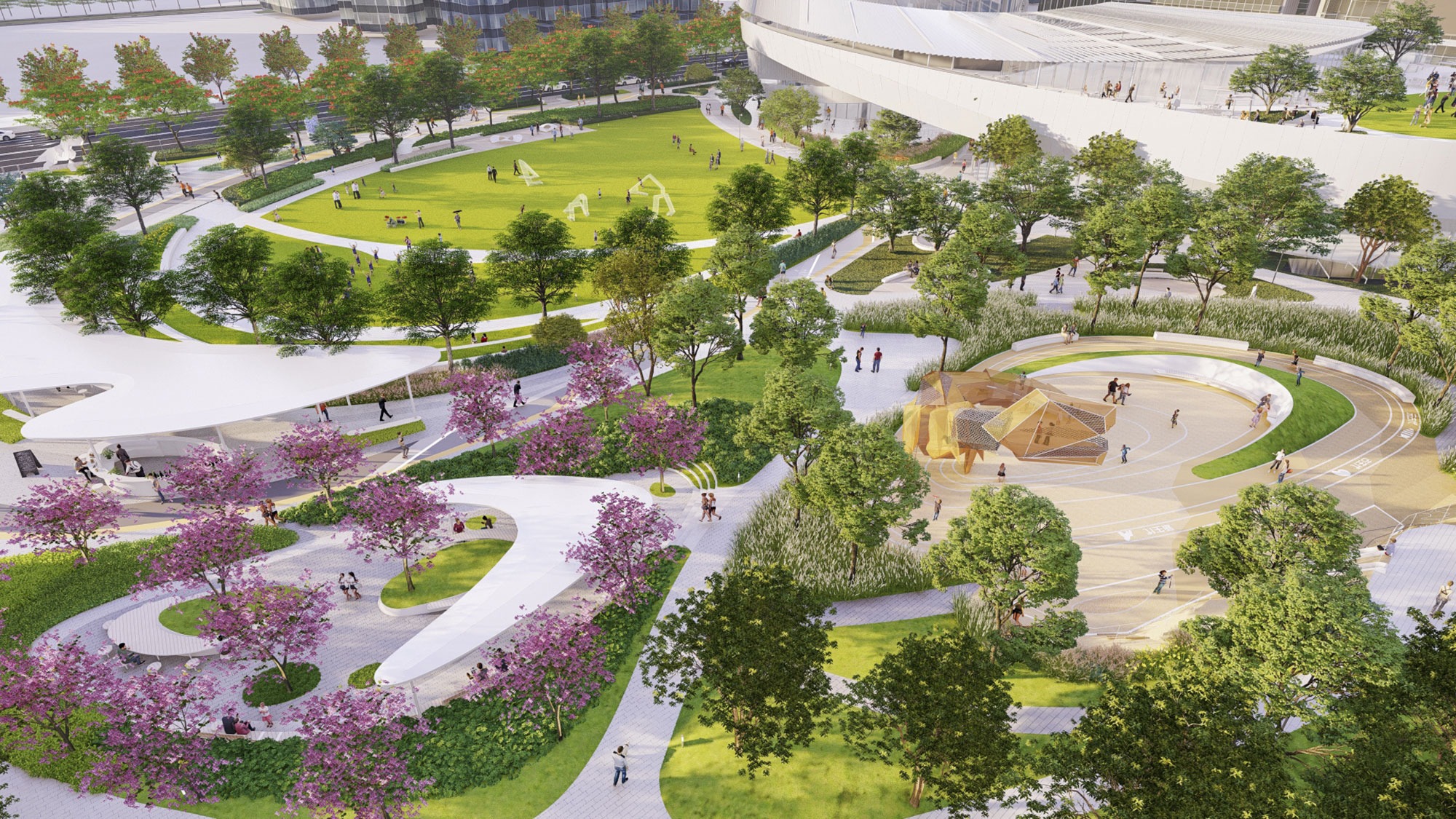
An Industrial Campus Reimagined: Environmental Health, Economic Development and Quality of Life
Shenzhen, a rapidly growing city, faces competing pressures among economic development, environmental health, and quality of life. It is known for progressive urban policies that integrate these realms. For example, environmental controls attract prosperous, healthy residents and high-value economic development.
The 'Basic Ecological Control Line' (BECL) is a key urban rezoning tool aimed at reversing environmental degradation by creating clean and green spaces. The In-Park site, a 66-hectare largely undeveloped energy research campus, adjoins the BECL and the Stone Drum Natural Reserve. It is envisioned as an extension of these ecological areas. The landscape architect has designed a high-performance open space network addressing habitat, reforestation, stormwater management, water quality, and urban heat. Urban design strategies focus on land use, development interface, and public realm vitality.
This plan establishes a new paradigm for sustainable urban campus development in China, showcasing how integrated approaches can enhance environmental health and economic prosperity.
Central Commons: Integrating Science, Culture and Wellness
Landscape architects transformed an inactive industrial parcel into a vibrant central common. The park serves office and industrial employees, research scientists, neighborhood residents, metro visitors, and school children. Sports and fitness venues cater to both campus employees and locals.
Large-scale, sculptural “innovation rings” frame and integrate the public space with a new community center. These rings symbolize the cyclical, iterative process of innovation, representing multidisciplinary interactions.
The Central Commons is surrounded by high-density development, including offices, employee and affordable housing, and mixed-use buildings. As new buildings emerge, they will further define the park and establish a "community of ownership" that cares for the space.
The park features a multi-purpose lawn and amphitheater for events, a weather-protected café with gathering spaces, and a Dinosaur Wonderland for children, offered at no cost to benefit low-income families.
Smart Gardens, under flowering Lavender Trumpet Trees, provide spaces for engagement, idea sharing, and outdoor offices. Equipped with conference furnishings, whiteboards, Wi-Fi, and digital kiosks, these gardens connect users with virtual reality stations for interactive experiences.
Eco Charm Park: Multiple Benefits
Fully developed industrial eco parks offer significant economic, environmental, and community benefits. The Eco Charm Park, a park within an industrial park, aims to provide foundational benefits by leveraging existing green spaces, once a commercial forest plantation.
The primary focus lies on the contributing role of a diverse, multi-species urban forest in enhancing air quality, community health, water cleansing and conservation, and mitigating greenhouse emissions. Habitat enhancements target various wildlife, including birds, butterflies, insects, small mammals, and amphibians.
While mature canopy trees such as Eucalyptus are retained, efforts also concentrate on enriching middle and lower story vegetation, incorporating species like Chinese Tallow, Lychee, and Old World Forked Fern. This strategy addresses the current forest's limited ecological benefits, fostering a more intricate, multi-layered plant community to bolster biodiversity, habitat quality, community education, stewardship, and overall quality of life.
Recognizing nature's value in urban settings, exposing children to natural environments cultivates their role as future stewards, instilling appreciation for healthy ecosystems. Research underscores nature's positive impact on mental well-being, offering cognitive and emotional benefits.
Services Provided
Master Planning, Landscape Architecture
